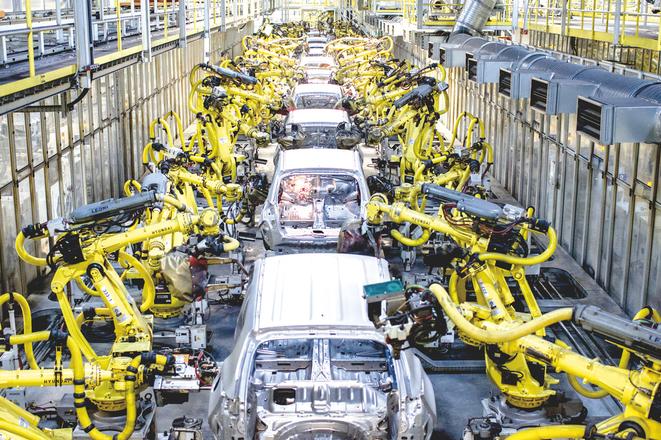The downward revision of economic growth predictions disrupted the flow of news about Slovakia’s booming economy in early 2019, with some consolidation of the automotive industry following suit.
The slashed forecast is mostly due to external factors, like lower interest in diesel cars, the upcoming Brexit and its impacts, and looming trade wars. Nevertheless, real salaries and the employment rate are expected to further increase, while the unemployment rate should go further down in the coming years.
“It seems that 2018 was the peak of the economic cycle in Slovakia,” said Finance Minister Peter Kažimír. Slovakia’s economy is showing signals of overheating, he added.
Slovakia’s GDP grew by 4.3 percent in 2018. In February, FinMin analysts estimated 2019’s growth at 4 percent, down by 0.5 percentage points compared to the previous prognosis. Real wages are expected to grow by 4 percent, while the unemployment rate should decrease to 6 percent. This should reduce the pressure posed by the lack of a labour force, the most frequently cited problem employers faced in 2018, along with legislative changes that increased costs and red tape.
The hike in the minimum wage and payments for night and other work caused the greatest problems for employers, along with GDPR implementation, said Silvia Slušná, HR manager at Direct Parcel Distribution SK.
“It has cost companies a lot of time, paperwork, and money,” Slušná told The Slovak Spectator.
The Peter Pellegrini cabinet heeded the calls of businesses and eased the rules for employing people from countries outside the European Union last year.
“But there is still quite a large group of long-term unemployed people in Slovakia,” Igor Šulík, managing Leadership Partner at Amrop, told The Slovak Spectator.
Some companies have focused their attention on Roma, while others hope that some Slovaks will return due to Brexit. The number of working pensioners is on the rise.
The labour market will face a number of other challenges in the following years, including a skill gap due to the mismatch of specific skills employers demand and jobseekers offer, the troubled education system, automation, and the increase of wage costs by laws adopted ad hoc.
Work surcharges and holiday vouchers
Since May 2018, companies have been obliged to pay their employees new work surcharges and a further increase in these is due later in 2019.
Businesses say these not only increase their wage costs but also reduce their space to increase salaries and other benefits. Surcharges may result in the higher prices of some products and services.
“In the end, we will all pay for each ‘pro-employee’ change,” said Slušná.
Moreover, as of January 1, 2019, companies with more than 49 employees must

provide their employees with recreational vouchers worth up to €500, for holidays spent in Slovakia. The employer covers 55 percent, i.e. up to €275, of the voucher. The employee covers the rest. Businesses view this as an ad hoc measure that brings an unplanned increase in their wage costs.
“Some employers may reduce other benefits for employees,” said Miriam Špániková, spokesperson for the Federation of Employers’ Associations (AZZZ). Employers calculate personal and social expenditures, which can be planned only within acceptable limits, she noted.
Jobless rate hit all-time low in 2018
Slovakia’s average unemployment rate fell to a record 5.04 percent in December 2018, a year-on-year decrease by 0.9 percentage points, data from the Central Office of Labour, Social Affairs and Family (ÚPSVaR) show.


 (source: Courtesy of Kia Motors Slovakia)
(source: Courtesy of Kia Motors Slovakia)